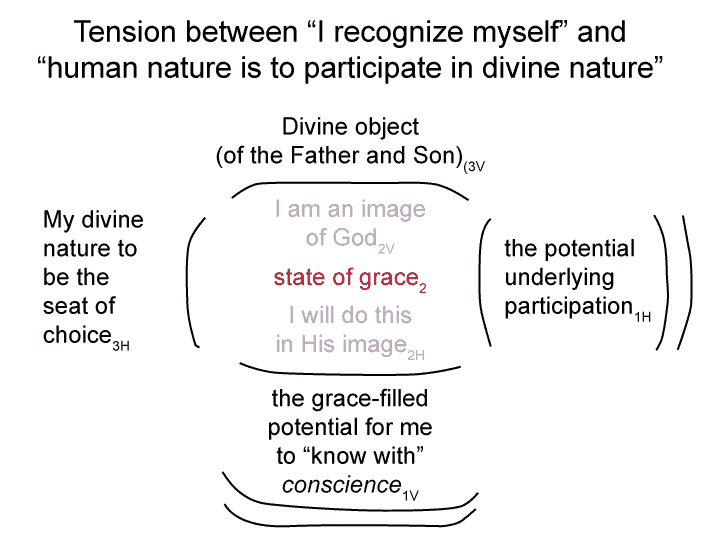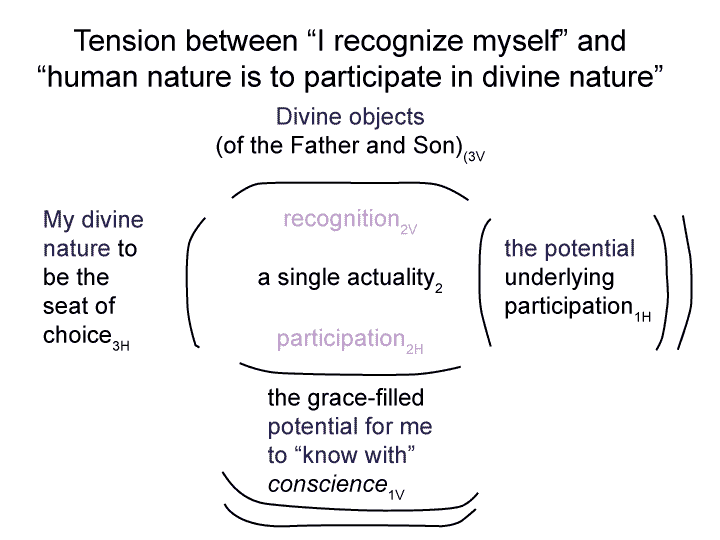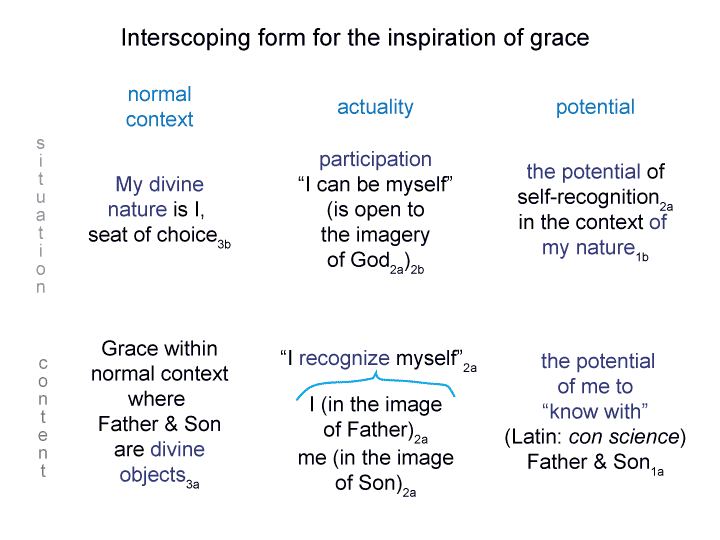Man and Sin by Piet Schoonenberg (1964) 2.1DM
Summary of text [comment] pages 68 and 69
[In the intersection-based model, self-destruction directly influences ‘what I am able to recognize (in particular, not my true myself, but an alienating idolatrous distortion)’.
Self-destruction indirectly alters my dispositions or nature (decreasing my capacity for fullness and meaning).
Perhaps, the terms ‘self-destruction’ or ‘state of self-destruction’ ought to label the single actuality of recognition and participation?
After all, Schoonenberg treated self-destruction as if it were an actuality.]



